 Voyager 2 visits the third planet on its grand tour of the outer solar system, becoming the first and only man-made spacecraft to visit Uranus. Since the blue-green planet and its moon are tipped over, Voyager has fewer opportunities to gather images of the moons of Uranus, but a close pass by its innermost large satellite, Miranda, yields pictures of one of the stranger surfaces in the solar system: a moon that was ripped apart and melted back together in the distant past. The atmosphere of Uranus reveals almost no details to Voyager 2’s cameras in the scant visible light available this far from the sun, but ten new moons are discovered, and the planet’s elusive dark rings are captured in several images. With no other missions to Uranus in the pipeline, Voyager 2’s brief flyby remains the primary source of most of our knowledge of the seventh planet from the sun. It will now take Voyager 2 three years to reach Neptune, its final target.
Voyager 2 visits the third planet on its grand tour of the outer solar system, becoming the first and only man-made spacecraft to visit Uranus. Since the blue-green planet and its moon are tipped over, Voyager has fewer opportunities to gather images of the moons of Uranus, but a close pass by its innermost large satellite, Miranda, yields pictures of one of the stranger surfaces in the solar system: a moon that was ripped apart and melted back together in the distant past. The atmosphere of Uranus reveals almost no details to Voyager 2’s cameras in the scant visible light available this far from the sun, but ten new moons are discovered, and the planet’s elusive dark rings are captured in several images. With no other missions to Uranus in the pipeline, Voyager 2’s brief flyby remains the primary source of most of our knowledge of the seventh planet from the sun. It will now take Voyager 2 three years to reach Neptune, its final target.
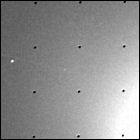 Tiny Adrastea, a small, asteroid-like moon of Jupiter, is discovered in photos returned by Voyager 2 during its flyby of the planet. Adrastea orbits along the outer edge of Jupiter’s ring system, and is likely to be the body from which material for that ring is ejected. Its close orbit carries it around the planet at a speed faster than Jupiter’s rotation, one of the few bodies in the solar system locked into such a fast orbit.
Tiny Adrastea, a small, asteroid-like moon of Jupiter, is discovered in photos returned by Voyager 2 during its flyby of the planet. Adrastea orbits along the outer edge of Jupiter’s ring system, and is likely to be the body from which material for that ring is ejected. Its close orbit carries it around the planet at a speed faster than Jupiter’s rotation, one of the few bodies in the solar system locked into such a fast orbit.
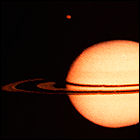 The unmanned space probe Pioneer 11 makes its closest approach to the planet Saturn, the first man-made object to visit the ringed planet. Scientists pay careful attention to Pioneer’s transmissions as it passes between Saturn’s clouds and its rings, watching for signs of damage (or worse) resulting from collision with the tiny particles that are predicted to exist there; Pioneer 11 slides past Saturn at a distance of only 12,800 miles from the planet’s cloudtops. This is Pioneer 11’s last planetary stop.
The unmanned space probe Pioneer 11 makes its closest approach to the planet Saturn, the first man-made object to visit the ringed planet. Scientists pay careful attention to Pioneer’s transmissions as it passes between Saturn’s clouds and its rings, watching for signs of damage (or worse) resulting from collision with the tiny particles that are predicted to exist there; Pioneer 11 slides past Saturn at a distance of only 12,800 miles from the planet’s cloudtops. This is Pioneer 11’s last planetary stop. NASA launches the third and final High Energy Astronomy Observatory satellite into Earth orbit, where it begins studying gamma ray sources and the nature of cosmic rays. There is also an experiment package designed to detect heavy atomic nuclei. HEAO-3 will remain in service through May 1981, and it will re-enter Earth’s atmosphere in December of that year.
NASA launches the third and final High Energy Astronomy Observatory satellite into Earth orbit, where it begins studying gamma ray sources and the nature of cosmic rays. There is also an experiment package designed to detect heavy atomic nuclei. HEAO-3 will remain in service through May 1981, and it will re-enter Earth’s atmosphere in December of that year. NASA temporarily loses contact with unmanned space probe Voyager 1 as it cruises toward Saturn. A science experiment is conducted which requires Voyager to point its antenna away from Earth and enter a rolling maneuver, but ground controllers do not hear back from Voyager 1 when they expect to receive the signal that the experiment has ended. A tracking station in Australia sends a wide-beam command to Voyager 1 to reorient itself; it is later discovered that, attempting to regain its orientation with respect to Earth, Voyager 1’s star tracker locked on to Alpha Centauri instead of Canopus, pointing its antenna dish five degrees away from Earth. Normal operations resume once Voyager is pointed correctly. A similar problem will again cause Voyager 1 to break contact after a course correction burn in December.
NASA temporarily loses contact with unmanned space probe Voyager 1 as it cruises toward Saturn. A science experiment is conducted which requires Voyager to point its antenna away from Earth and enter a rolling maneuver, but ground controllers do not hear back from Voyager 1 when they expect to receive the signal that the experiment has ended. A tracking station in Australia sends a wide-beam command to Voyager 1 to reorient itself; it is later discovered that, attempting to regain its orientation with respect to Earth, Voyager 1’s star tracker locked on to Alpha Centauri instead of Canopus, pointing its antenna dish five degrees away from Earth. Normal operations resume once Voyager is pointed correctly. A similar problem will again cause Voyager 1 to break contact after a course correction burn in December.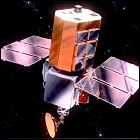 NASA launches the unmanned Solar Maximum Mission satellite atop a Delta 3910 rocket, to study cyclical solar flare activity from Earth orbit. Built by Fairchild and relying on a magnetic reaction wheel system to maintain precise aim at the sun, “Solar Max” suffers malfunctions in orbit, and will be able to carry out only limited observations by November 1980. In 1984, Solar Max will become the first satellite to be
NASA launches the unmanned Solar Maximum Mission satellite atop a Delta 3910 rocket, to study cyclical solar flare activity from Earth orbit. Built by Fairchild and relying on a magnetic reaction wheel system to maintain precise aim at the sun, “Solar Max” suffers malfunctions in orbit, and will be able to carry out only limited observations by November 1980. In 1984, Solar Max will become the first satellite to be 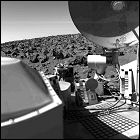 Two years after the shutdown of its orbiter leaves it sending observations of the Martian environment back to Earth at a low bit rate, the
Two years after the shutdown of its orbiter leaves it sending observations of the Martian environment back to Earth at a low bit rate, the  With the Jupiter encounter behind it, NASA’s Voyager 2 unmanned spacecraft is given a new backup mission plan, replacing the original Jupiter/Saturn backup plan implemented after a radio receiver failure befell the spacecraft in 1978. Intended to reap the minimum acceptable science observations (including photography) and transmit them to Earth should Voyager 2’s ability to receive new commands be lost, this new backup mission load now includes automated observation plans for Saturn and Uranus, the latter of which will not be reached until 1986.
With the Jupiter encounter behind it, NASA’s Voyager 2 unmanned spacecraft is given a new backup mission plan, replacing the original Jupiter/Saturn backup plan implemented after a radio receiver failure befell the spacecraft in 1978. Intended to reap the minimum acceptable science observations (including photography) and transmit them to Earth should Voyager 2’s ability to receive new commands be lost, this new backup mission load now includes automated observation plans for Saturn and Uranus, the latter of which will not be reached until 1986. NOAA’s GOES-4 Geostationary Operational Environmental Satellite is launched from Cape Canaveral into a geosynchronous orbit over 98 degrees west longitude on Earth, a position which will change several times over GOES-4’s career until 1988, allowing it to monitor weather over the continental United States and Europe. In 1988, GOES-4 will become the first satellite to be boosted into a “graveyard” parking orbit using its remaining propellant, leaving it intact in a higher-than-geostationary orbit to avoid collisions with operational satellites.
NOAA’s GOES-4 Geostationary Operational Environmental Satellite is launched from Cape Canaveral into a geosynchronous orbit over 98 degrees west longitude on Earth, a position which will change several times over GOES-4’s career until 1988, allowing it to monitor weather over the continental United States and Europe. In 1988, GOES-4 will become the first satellite to be boosted into a “graveyard” parking orbit using its remaining propellant, leaving it intact in a higher-than-geostationary orbit to avoid collisions with operational satellites.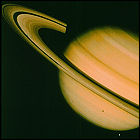 Thanks to a significant gravity assist from Jupiter, Voyager 1 arrives at Saturn only a year behind Pioneer 11, imaging the planet, its rings and its moons in far greater detail. Its planned trajectory takes Voyager 1 close to the cloud-shrouded moon Titan, whose surface scientists hope to be able to see for the first time, but the close flyby yields only the featureless clouds, much to the mission planners’ disappointment. This is Voyager 1’s final planetary stop, with a proposed visit to Pluto having fallen by the wayside early in mission planning in favor of the close-up look at Titan.
Thanks to a significant gravity assist from Jupiter, Voyager 1 arrives at Saturn only a year behind Pioneer 11, imaging the planet, its rings and its moons in far greater detail. Its planned trajectory takes Voyager 1 close to the cloud-shrouded moon Titan, whose surface scientists hope to be able to see for the first time, but the close flyby yields only the featureless clouds, much to the mission planners’ disappointment. This is Voyager 1’s final planetary stop, with a proposed visit to Pluto having fallen by the wayside early in mission planning in favor of the close-up look at Titan. NASA receives approval to continue Voyager 2‘s mission to the planets beyond Saturn, provided that Voyager 1’s visit to Saturn and its moons goes satisfactorily. The approval includes an additional $100,000,000 budget increase to keep Voyager’s ground controllers, engineers and staff scientists on JPL’s payroll through the Uranus encounter, which is expected to take place in 1986.
NASA receives approval to continue Voyager 2‘s mission to the planets beyond Saturn, provided that Voyager 1’s visit to Saturn and its moons goes satisfactorily. The approval includes an additional $100,000,000 budget increase to keep Voyager’s ground controllers, engineers and staff scientists on JPL’s payroll through the Uranus encounter, which is expected to take place in 1986.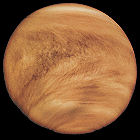 NASA’s unmanned Pioneer Venus Orbiter completes its radar mapping survey of the planet Venus, having used radar to create the first-ever topographical map of that world, which is usually hidden behind a thick, toxic cloud deck. Launched in 1978, Pioneer Venus Orbiter is the only surviving component of the two-vehicle Pioneer Venus mission, but with its solar arrays still gathering adequate power and all of its instruments still functioning well, the orbiter is not deactivated or deorbited at this time; future tasks will be found for it in the years ahead.
NASA’s unmanned Pioneer Venus Orbiter completes its radar mapping survey of the planet Venus, having used radar to create the first-ever topographical map of that world, which is usually hidden behind a thick, toxic cloud deck. Launched in 1978, Pioneer Venus Orbiter is the only surviving component of the two-vehicle Pioneer Venus mission, but with its solar arrays still gathering adequate power and all of its instruments still functioning well, the orbiter is not deactivated or deorbited at this time; future tasks will be found for it in the years ahead.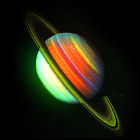 The NASA/JPL unmanned space probe Voyager 2 makes its closest pass to the planet Saturn. Unlike Voyager 1, Voyager 2 does not make a close pass to the large moon Titan, and uses Saturn’s gravity to deflect it toward the planet Uranus, the first man-made spacecraft to aim for that planet. Problems with the aiming mechanism of the scan platform – the arm of the spacecraft containing Voyager’s camera and imaging systems – call the viability of a Uranus flyby into question for a short time, but the issue is resolved and workaround procedures are developed in the event of a recurring problem.
The NASA/JPL unmanned space probe Voyager 2 makes its closest pass to the planet Saturn. Unlike Voyager 1, Voyager 2 does not make a close pass to the large moon Titan, and uses Saturn’s gravity to deflect it toward the planet Uranus, the first man-made spacecraft to aim for that planet. Problems with the aiming mechanism of the scan platform – the arm of the spacecraft containing Voyager’s camera and imaging systems – call the viability of a Uranus flyby into question for a short time, but the issue is resolved and workaround procedures are developed in the event of a recurring problem.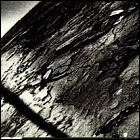 The Soviet Union’s unmanned Venera 14 space probe successfully lands on the planet Venus, its landing module enduring almost an hour in temperatures of nearly 900 degrees Fahrenheit and air pressure nearly 100 times that experienced at sea level on Earth. A soil sampling experiment is thwarted by an unforseen problem, namely the lens cap of Venera 14’s camera popping off and landing precisely where its sampling arm was designed to gather Venusian soil for testing.
The Soviet Union’s unmanned Venera 14 space probe successfully lands on the planet Venus, its landing module enduring almost an hour in temperatures of nearly 900 degrees Fahrenheit and air pressure nearly 100 times that experienced at sea level on Earth. A soil sampling experiment is thwarted by an unforseen problem, namely the lens cap of Venera 14’s camera popping off and landing precisely where its sampling arm was designed to gather Venusian soil for testing. Its primary mission satisfactorily completed, the NASA/ESA ISEE-3 (International Sun-Earth Explorer 3) satellite has a surplus of maneuvering fuel left over, and is given a new mission: it begins a series of over a dozen maneuvers utilizing both thrusters and gravity-assists, intended to push it out of its LaGrange point between Earth and the sun and toward a 1985 rendezvous with Comet Giacobinni-Zinner. Upon its final maneuver in 1983, ISEE-3 will be renamed ICE (International Cometary Explorer) and, after the complex series of course changes, will be perfectly targeted for its 1985 comet encounter.
Its primary mission satisfactorily completed, the NASA/ESA ISEE-3 (International Sun-Earth Explorer 3) satellite has a surplus of maneuvering fuel left over, and is given a new mission: it begins a series of over a dozen maneuvers utilizing both thrusters and gravity-assists, intended to push it out of its LaGrange point between Earth and the sun and toward a 1985 rendezvous with Comet Giacobinni-Zinner. Upon its final maneuver in 1983, ISEE-3 will be renamed ICE (International Cometary Explorer) and, after the complex series of course changes, will be perfectly targeted for its 1985 comet encounter. NASA launches Landsat 4, the fourth Landsat Earth resource observation satellite and the first to be redesigned from the ground up (previous Landsats had been based on NASA’s Nimbus satellites from the 1960s and ’70s). For the first time, Landsat data processing and distribution is handled by another government agency, the U.S. Geological Survey, which partners with NASA on all future Landsat satellites. Landsat 4 is the first Landsat to link up to NASA’s TDRS (Tracking & Data Relay Satellite) system, thus enabling real-time data transmission to Earth even when Landsat 4 isn’t passing over a ground station. Landsat 4 remains operational through the end of 1993.
NASA launches Landsat 4, the fourth Landsat Earth resource observation satellite and the first to be redesigned from the ground up (previous Landsats had been based on NASA’s Nimbus satellites from the 1960s and ’70s). For the first time, Landsat data processing and distribution is handled by another government agency, the U.S. Geological Survey, which partners with NASA on all future Landsat satellites. Landsat 4 is the first Landsat to link up to NASA’s TDRS (Tracking & Data Relay Satellite) system, thus enabling real-time data transmission to Earth even when Landsat 4 isn’t passing over a ground station. Landsat 4 remains operational through the end of 1993.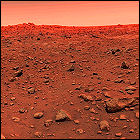 After over six years of continuous operation and data gathering on the planet Mars, the Viking 1 lander – having outlived the power supply aboard its orbiter and now transmitting its observations directly to Earth – is inadvertently silenced during what is intended to be a remote upgrade of its on-board software. Ground controllers are never able to establish contact with Viking 1 again. Its record of continuous operation on another planet is not broken until 2010, when Viking 1 is outlasted by NASA’s Opportunity rover.
After over six years of continuous operation and data gathering on the planet Mars, the Viking 1 lander – having outlived the power supply aboard its orbiter and now transmitting its observations directly to Earth – is inadvertently silenced during what is intended to be a remote upgrade of its on-board software. Ground controllers are never able to establish contact with Viking 1 again. Its record of continuous operation on another planet is not broken until 2010, when Viking 1 is outlasted by NASA’s Opportunity rover.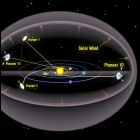 NASA’s Pioneer 10 unmanned spacecraft becomes the first human-made spacecraft to pass beyond the orbit of Pluto, the outermost known planet in the solar system. (Pioneer 10 merely crosses the planet’s orbital path; Pluto itself is in a different part of its orbit, nowhere near Pioneer at the time.) Launched in 1972, Pioneer 10 was the first spacecraft to cross the asteroid belt and observe the giant planet Jupiter at close range, blazing a trial for other outer solar system robotic exploration missions.
NASA’s Pioneer 10 unmanned spacecraft becomes the first human-made spacecraft to pass beyond the orbit of Pluto, the outermost known planet in the solar system. (Pioneer 10 merely crosses the planet’s orbital path; Pluto itself is in a different part of its orbit, nowhere near Pioneer at the time.) Launched in 1972, Pioneer 10 was the first spacecraft to cross the asteroid belt and observe the giant planet Jupiter at close range, blazing a trial for other outer solar system robotic exploration missions.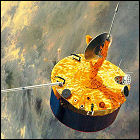 Having received new orders from NASA, the still-functional Pioneer Venus Orbiter – launched in 1978 and in a high, looping orbit over Venus since it ceased active observations of the planet in 1981 – turns its instruments in the direction of Comet Encke, which is currently passing through the inner solar system. Rather than its cameras, the orbiter’s ultraviolet spectrometer is trained on the comet as Earth-based researchers try to determine the composition and rotational speed of Encke’s nucleus. The Pioneer Venus Orbiter will continue to observe other comets through the late 1980s.
Having received new orders from NASA, the still-functional Pioneer Venus Orbiter – launched in 1978 and in a high, looping orbit over Venus since it ceased active observations of the planet in 1981 – turns its instruments in the direction of Comet Encke, which is currently passing through the inner solar system. Rather than its cameras, the orbiter’s ultraviolet spectrometer is trained on the comet as Earth-based researchers try to determine the composition and rotational speed of Encke’s nucleus. The Pioneer Venus Orbiter will continue to observe other comets through the late 1980s.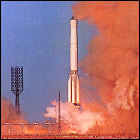 The unmanned Vega 1 space probe is launched by the Soviet Union on a dual mission to drop off a lander at Venus and then to intercept Halley’s Comet in 1986. Derived from the USSR’s earlier Venera Venus landers, Vega will test a refined landing system for landing on Venus by balloon, and will then join an international fleet of unmanned spacecraft attempting to take advantage of Halley’s visit to the inner solar system in late 1985 and early 1986.
The unmanned Vega 1 space probe is launched by the Soviet Union on a dual mission to drop off a lander at Venus and then to intercept Halley’s Comet in 1986. Derived from the USSR’s earlier Venera Venus landers, Vega will test a refined landing system for landing on Venus by balloon, and will then join an international fleet of unmanned spacecraft attempting to take advantage of Halley’s visit to the inner solar system in late 1985 and early 1986.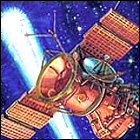 Just days after its twin lifts off, the unmanned Vega 2 space probe is launched by the Soviet Union on a dual mission to drop off a lander at Venus and then to intercept Halley’s Comet in 1986. Derived from the USSR’s earlier Venera Venus landers, Vega 2 will test a refined landing system for landing on Venus by balloon, and will then join an international fleet of unmanned spacecraft attempting to take advantage of Halley’s visit to the inner solar system in late 1985 and early 1986.
Just days after its twin lifts off, the unmanned Vega 2 space probe is launched by the Soviet Union on a dual mission to drop off a lander at Venus and then to intercept Halley’s Comet in 1986. Derived from the USSR’s earlier Venera Venus landers, Vega 2 will test a refined landing system for landing on Venus by balloon, and will then join an international fleet of unmanned spacecraft attempting to take advantage of Halley’s visit to the inner solar system in late 1985 and early 1986.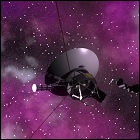 NASA engineers complete a multi-year project to completely reprogram Voyager 2 during the unmanned space probe’s five-year journey from Saturn to Uranus. A planet receiving only a fraction of the sunlight that made photography possible at Jupiter and Saturn, Uranus requires much longer exposures, slower camera shutter speeds, and incredibly precise camera tracking. To compensate for the extreme lag in comunications to and from Uranus, data compression algorithms are devised using techniques that simply didn’t exist at the time of Voyager 2’s construction and original programming, but the compression scheme is an all-or-nothing proposition: it ties up Voyager 2’s backup computer, meaning that a failure of the main computer during a critical maneuver could send the probe off-course, perhaps even colliding with the bodies it intends to study.
NASA engineers complete a multi-year project to completely reprogram Voyager 2 during the unmanned space probe’s five-year journey from Saturn to Uranus. A planet receiving only a fraction of the sunlight that made photography possible at Jupiter and Saturn, Uranus requires much longer exposures, slower camera shutter speeds, and incredibly precise camera tracking. To compensate for the extreme lag in comunications to and from Uranus, data compression algorithms are devised using techniques that simply didn’t exist at the time of Voyager 2’s construction and original programming, but the compression scheme is an all-or-nothing proposition: it ties up Voyager 2’s backup computer, meaning that a failure of the main computer during a critical maneuver could send the probe off-course, perhaps even colliding with the bodies it intends to study.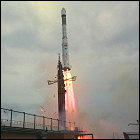 The European Space Agency launches the unmanned Giotto space probe, designed to rendezvous with and observe Halley’s Comet during the comet’s pass through the inner solar system in 1986. The first-ever ESA mission aiming for a target beyond Earth orbit, Giotto is based loosely on the design of ESA’s GEOS satellites, with thick aluminum and Kevlar shielding to help the probe survive potential impacts with cometary matter as it closes in on Halley’s nucleus. Giotto is the first spacecraft ever to use Earth itself for a gravity assist maneuver (which later becomes standard practice with such space vehicles as Galileo, Messenger and Juno). It will go on to become the first vehicle to visit a comet.
The European Space Agency launches the unmanned Giotto space probe, designed to rendezvous with and observe Halley’s Comet during the comet’s pass through the inner solar system in 1986. The first-ever ESA mission aiming for a target beyond Earth orbit, Giotto is based loosely on the design of ESA’s GEOS satellites, with thick aluminum and Kevlar shielding to help the probe survive potential impacts with cometary matter as it closes in on Halley’s nucleus. Giotto is the first spacecraft ever to use Earth itself for a gravity assist maneuver (which later becomes standard practice with such space vehicles as Galileo, Messenger and Juno). It will go on to become the first vehicle to visit a comet.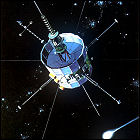 The International Cometary Explorer satellite – originally launched as International Sun-Earth Explorer 3 in 1978 – reaches the culmination of a series of complex orbital changes: a flyby of Comet Giacobini-Zinner, within 5,000 miles of the nucleus, primarily to sample and study the comet’s plasma tail and the interaction between that and the solar wind. ISEE-3 was not equipped with cameras at launch, so no imagery of the comet is obtained. The success of this flyby emboldens mission planners who hope to send it onward to study Halley’s Comet early in 1986, as part of a backup plan to use existing NASA spacecraft to study Halley in lieu of a specialized vehicle that would’ve been launched by space shuttle in 1986 (cancelled in the wake of the Challenger disaster).
The International Cometary Explorer satellite – originally launched as International Sun-Earth Explorer 3 in 1978 – reaches the culmination of a series of complex orbital changes: a flyby of Comet Giacobini-Zinner, within 5,000 miles of the nucleus, primarily to sample and study the comet’s plasma tail and the interaction between that and the solar wind. ISEE-3 was not equipped with cameras at launch, so no imagery of the comet is obtained. The success of this flyby emboldens mission planners who hope to send it onward to study Halley’s Comet early in 1986, as part of a backup plan to use existing NASA spacecraft to study Halley in lieu of a specialized vehicle that would’ve been launched by space shuttle in 1986 (cancelled in the wake of the Challenger disaster).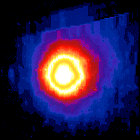 Having already conducted measuresment of Comets Encke and Giacobini-Zinner, the still-functioning Pioneer Venus Orbiter, launched in 1978, becomes the centerpiece of the American effort to gather close-up data on Halley’s Comet. Imaging the comet in ultraviolet light, Pioneer Venus captures Halley from a unique vantage point: both the comet and the planet being orbited by Pioneer are on the opposite side of the sun from Earth, when Halley is at its closest approach to the sun – an event that no other spacecraft is in a position to witness. The Pioneer Venus data will become the most critical data gathered on Halley by an American spacecraft after a planned March 1986 Space Shuttle mission to image the comet from Earth orbit is scrapped in the wake of the Challenger disaster in January.
Having already conducted measuresment of Comets Encke and Giacobini-Zinner, the still-functioning Pioneer Venus Orbiter, launched in 1978, becomes the centerpiece of the American effort to gather close-up data on Halley’s Comet. Imaging the comet in ultraviolet light, Pioneer Venus captures Halley from a unique vantage point: both the comet and the planet being orbited by Pioneer are on the opposite side of the sun from Earth, when Halley is at its closest approach to the sun – an event that no other spacecraft is in a position to witness. The Pioneer Venus data will become the most critical data gathered on Halley by an American spacecraft after a planned March 1986 Space Shuttle mission to image the comet from Earth orbit is scrapped in the wake of the Challenger disaster in January. Voyager 2 visits the third planet on its grand tour of the outer solar system, becoming the first and only man-made spacecraft to visit Uranus. Since the blue-green planet and its moon are tipped over, Voyager has fewer opportunities to gather images of the moons of Uranus, but a close pass by its innermost large satellite, Miranda, yields pictures of one of the stranger surfaces in the solar system: a moon that was ripped apart and melted back together in the distant past. The atmosphere of Uranus reveals almost no details to Voyager 2’s cameras in the scant visible light available this far from the sun, but ten new moons are discovered, and the planet’s elusive dark rings are captured in several images. With no other missions to Uranus in the pipeline, Voyager 2’s brief flyby remains the primary source of most of our knowledge of the seventh planet from the sun. It will now take Voyager 2 three years to reach Neptune, its final target.
Voyager 2 visits the third planet on its grand tour of the outer solar system, becoming the first and only man-made spacecraft to visit Uranus. Since the blue-green planet and its moon are tipped over, Voyager has fewer opportunities to gather images of the moons of Uranus, but a close pass by its innermost large satellite, Miranda, yields pictures of one of the stranger surfaces in the solar system: a moon that was ripped apart and melted back together in the distant past. The atmosphere of Uranus reveals almost no details to Voyager 2’s cameras in the scant visible light available this far from the sun, but ten new moons are discovered, and the planet’s elusive dark rings are captured in several images. With no other missions to Uranus in the pipeline, Voyager 2’s brief flyby remains the primary source of most of our knowledge of the seventh planet from the sun. It will now take Voyager 2 three years to reach Neptune, its final target.